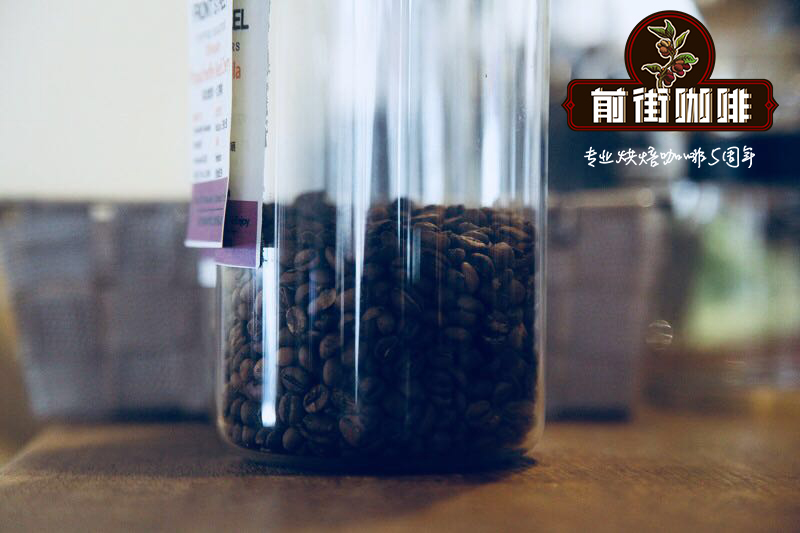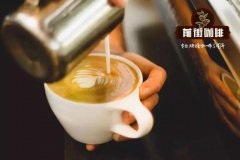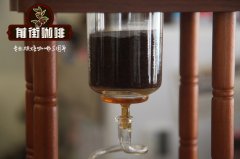The kettle can only be ground with rough grinding. Fine grinding may make the coffee taste better! The French kettle is recommended!

Professional coffee knowledge exchange more coffee bean information please follow the coffee workshop (Wechat official account cafe_style)
The French filter pot is one of the simplest and lowest-cost coffee brewing methods. Even beginners can quickly make a decent cup of coffee.
But what will happen if the grinding thickness of the powder is adjusted when brewing this decent cup of coffee?
This may be against our perception, but in this article we will see whether the fine grinding of the punch kettle is feasible in the end.
An immutable rule
The world of fine coffee often adjusts the extraction time, grinding thickness and other factors in order to achieve the most suitable brewing method for this coffee. But the tests of these factors are usually only used in hand brewing, espresso, love pressure and other brewing methods, while the French kettle is always ignored.
It is generally agreed that the kettle should be boiled with coarse ground coffee powder, soaked for three to five minutes, and then pressed to drink.
Of course, there are three factors that can be tested in the French kettle, and three factors are related, if you adjust one factor, the other two may have to be adjusted as well.
Why is rough grinding usually used?
It may seem strange to buy an expensive bean grinder for the grinding thickness of the experimental kettle, but if you want to drink good coffee, you can think about it. After all, a good bean grinder can grind coffee powder of stable quality.
Inconsistent grinding will form powders of different thickness, while low-quality beans will form a large number of fine powders. although these fine powders can be screened with a sieve, if the screening action is not implemented, the coffee will be full of miscellaneous taste and bitterness.
When you use coarse ground coffee powder, you are less likely to produce a large amount of fine powder, which means you are less likely to drink a cup of coffee with a heavy flavor. If you use a good quality bean grinder, or after grinding with a sieve, you can solve the problem of fine powder caused by grinding.
The French filter kettle is a kind of immersion brewing method, which means that the extraction time of coffee beans is longer than other brewing methods. for this reason, we often use thicker grinding to ensure that the extraction speed will not lead to over-extraction.
If it is hand-brewed coffee, fine grinding will be used so that the water will not flow too quickly through the powder, but there will be no problem with the extraction in the autoclave, so we can have more freedom to experiment. Of course, we must take into account that if the grinding degree is adjusted, the extraction time should also be adjusted to avoid excessive extraction. But it is not limited by the problem of hand-flushed water passing through the powder bed.
Debate on fine grinding
The reason for using fine grinding is to speed up the extraction of flavor substances, because the powder has more surface area in contact with water, so that the soluble substances of coffee can be dissolved in water more quickly.
Founder Matt Perger said that the most important part is that the grinding thickness does not really change the extracted substances, but only changes when the substances will be extracted, because all the flavors of coffee beans are like this, and there are at most so many substances that can be extracted. Grinding thickness will only affect how many flavor substances will dissolve in water.
Matt stressed that if you let the water contact with the coffee longer, it will extract more flavor, and we can do this by prolonging the extraction time, but because the hot water cools during the brewing process, this may not be as effective as using the same extraction time with fine grinding to make the coffee.
One of the concerns about using the finely ground coffee powder in the press pot is that the coffee brewed may have a mixed smell, because the finer ground powder will penetrate the filter screen of the kettle, but the better quality kettle can keep the medium-ground powder from penetrating the filter screen.
James Hoffman, author of the World Coffee Map, suggests using medium-ground coffee powder to make the coffee kettle, stirring in four minutes, and pouring coffee out in five to seven minutes. He also says that the coffee kettle has the highest fault tolerance rate, and that it can be soaked for a long time so that the coffee can easily show a complete extraction flavor.
However, James also suggests that you try to cook it with a fine grind until it tastes bitter. If the coffee has a bitter taste, you must slightly adjust the grinding degree of the coffee powder, so that you can flush out the good taste of the coffee.
In other words, to avoid excessive extraction, if the grinding is too fine, it will extract too many bitter substances, resulting in bad coffee.
How to use fine grinding?
This part is mentioned at the beginning, how do we use the grindability experiment to press the pot.
Coffee beans
Using 35g coffee beans with 475ml of water, James recommends using electronic scales to let you know how much coffee and powder you are using, and adjust your use if necessary. Use a good bean grinder to grind the powder to medium and coarse.
If the clarity of the taste of coffee is important to you, try to screen out fine powder and large particles before brewing. The authors believe that using sieves of 600 microns and 800 microns can help reduce soaking time, because the removal of large particles means that the extraction process will be more uniform, but this method of screening coffee powder will cause more waste.
Cooking method
When using this method for the first time, use about 93 ℃ of hot water. If you don't have a thermometer, you can flush it for about 30 seconds after the water boils.
After stirring the coffee and rolling the coffee powder with water, put the pressure tube and lid up and press down a little bit, this action will not touch the coffee powder, because the hot water in the glass container cools quickly, so the lid of the pressure tube acts as heat insulation at this time.
When soaking for another seven to ten minutes, almost all the coffee powder is fully soaked. At this time, you can carefully observe the state of the powder and water before pressing the cylinder, and slow down during the pressure to prevent the fine powder from flowing into the coffee you want to drink.
Leave some space between the coffee powder and the strainer, because the remaining coffee powder will release a miscellaneous smell due to excessive soaking. Turkish coffee is also cooked in this way to control the precipitation of the powder.
Be careful when pouring coffee so as not to let the coffee grounds pass through the filter and flow into the cup, resulting in poor taste of the coffee.
After the normal cooking method, repeat the same action but use a finer powder to check the difference between the two.
Said: in order to find out the most suitable thickness of the kettle, you can grind it thinner than you are used to, and then compare the difference between the two.
While grinding, the water temperature should also be adjusted.
When you adjust the grinding thickness, you must also consider the cooking water temperature, because fine grinding will increase the surface area of the powder, and then speed up the extraction. Lowering the water temperature can slow down the extraction and avoid the bitterness caused by over-extraction.
When using moderate grinding, try lowering the water temperature from 93 ℃ to 91 ℃ and slightly lengthening the cooking time. In this way, you may be able to achieve a cup of coffee with rich flavor but no bitter taste.
If you use coarse ground powder with lower temperature water, it may lead to insufficient extraction unless the cooking time is extended. The key to this paragraph is that the influence of a variable is linked. If you change one cause, you may have to adjust another at the same time.
Some people prefer to brew in near-boiling water, Matt Perger said. He likes to brew at a high temperature, and when the coffee is of good quality, temperature control is important to avoid bitterness at too high temperature or insufficient extraction at too low temperature.
There are many forms of making coffee, and the most important thing is the mastery of extraction. Balancing these factors is very important. Try different water temperature, grinding thickness, brewing time, and find out which cup of coffee you think is the best.
What kind of pressure pot do you want to choose?
One thing that should be noticed about the glass kettle is the loss of water temperature during cooking.
If you want to change the cause of the experimental kettle, try using the ceramic kettle, or add heat insulation to the periphery of the glass kettle. Stainless steel pressure pots can also provide good thermal insulation, but the authors think it will add an unpleasant metallic flavor to the coffee.
Knowing that extraction can give you the opportunity to experiment with cooking, and the pressure kettle, like other cooking utensils, has many ways to experiment.
If you use a good quality bean grinder, you can soak the powder as much as possible, and then slowly press down the canister. Normally, you won't get a cup of coffee with mixed flavor.
Don't be afraid to experiment with new data, adjust the grinding thickness, water temperature, cooking time, and find out what you like and what you don't like.
Important Notice :
前街咖啡 FrontStreet Coffee has moved to new addredd:
FrontStreet Coffee Address: 315,Donghua East Road,GuangZhou
Tel:020 38364473
- Prev

What kind of milk is best added to coffee? What kind of milk tastes good with coffee?
Professional coffee knowledge exchange more coffee bean information please follow the coffee workshop (Wechat official account cafe_style) when your coffee was baked? What kind of treatment? What baking degree? I'm sure people who make coffee must have a way to answer these questions. But if you are asked about the milk you use, you may not be able to answer directly. You have to look at the label on the package. When coffee
- Next

Knowledge has increased! Do you know how to use all kinds of coffee sets?
Professional coffee knowledge exchange more coffee bean information please pay attention to the coffee workshop (Wechat official account cafe_style) coffee utensils, refers to the grinding, brewing, tasting coffee utensils. The more distinctive coffee utensils are steam pressurized coffee maker, siphon coffee maker, espresso machine, straight bucket espresso machine and so on. It is an important part of coffee culture. You know, all kinds.
Related
- What is the Philharmonic pressure? How to use Philharmonic pressure to make delicious coffee
- Why does a hand grinder have more fine powder than an electric grinder?
- In addition to the hot mom, what is the difference between the versions of EK43 | ditting and Mahdi ek43?
- What kind of equipment do you need to make coffee by hand? Introduction to novice starter cooking equipment tools
- Espresso needs to be ground how thick and thin scale entry Italian Coffee Machine Bean Grinder investigation and Grinding course
- How much does it cost to open a small private cafe? How much does it cost to learn coffee? How to operate it?
- The difference between the flavor characteristics of hand-brewed coffee and coffee maker is hand-brewed coffee really better than coffee maker? Can I use a coffee machine to make coffee beans by hand?
- The difference between 01 and 02 of hario v60 filter cup what is the difference between 01 and 02 filter cup opening and cooking flavor
- What's the difference between the smart cup and the French kettle? Which is better, the French kettle or the Smart Cup?
- What's the difference between a smart cup and a V60 filter cup? The difference between the taste of smart cup and hand-brewed coffee

